Be they energetic or docile, pocket-sized or king-bed-sized, pets of all shapes and sizes are warming the hearts of Americans. Millions of households consider their furry friends to be lifelong companions, and they’re treated as such. States Butch Smith, natural national sales manager for WellPet, Tewksbury, MA, “There’s no doubt that pet parents have developed a more intimate relationship with their pets than ever before…As people are adopting healthy, natural diets for their families, they also want to provide the same for their pets.”
Retailers, if you haven’t started embracing your clients’ fur-babies as valid customers, you could be losing out on an important shopper segment. While they may not swipe the credit card, they are most certainly influencing the buying behavior of your two-legged clientele.
Great Dane-Sized Category Growth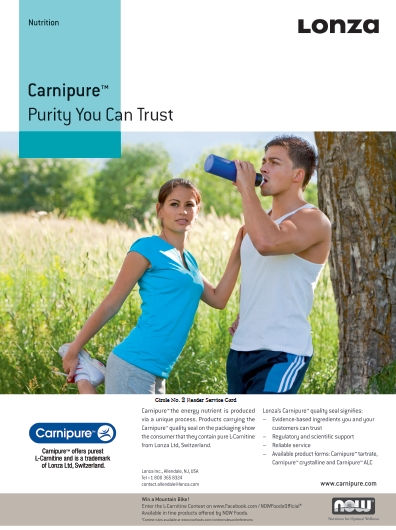
“Recession resilient” is what market research firm Packaged Facts said about the U.S. pet industry in a recent report (1). With total expenditures of $47.7 billion in 2010 (up from $45.5 in 2009), one would have to agree (2).
In 2010, U.S. retailers took in more than $1 billion in sales from pet supplements and nutraceutical treats, which represents a 4% compound annual growth rate since 2006. Supplements that address certain health conditions (like glucosamine for joint health) are top sellers right now, Packaged Facts states.
There’s more good news for stores that sell pet products. Despite a small leveling off during the tough economic times of late, Packaged Facts predicts, “U.S. retail sales of pet supplements and nutraceutical treats are expected to begin to pick back up in 2011, with the annual sales growth regaining steam through 2015.” The group anticipates that the U.S. pet supplements industry will be worth $2 billion by 2015.
So, besides supplements, where else is the category growing? Citing Petfood Industry, Michael McCarthy, director of marketing at Zuke’s, Durango, CO, states that “organic pet food sales are growing faster than human organic food sales.” Clearly, your average grocery store pet food isn’t going to cut it.
Andrew S. Mitchell, senior vice president of sales and marketing at Castor & Pollux Natural PetWorks, Clackamus, OR, notes that growth in this area has been especially strong since the melamine scandal of 2007. He states, “Consumers reacted to the recall by trading up to natural and organic products, but more importantly they really began the process of exploring what makes natural and organic brands better/different.”
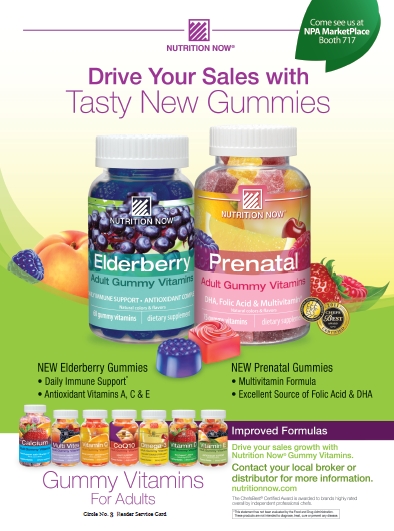 But, don’t make the mistake of assuming that all shoppers are differentiating between the pet foods that supermarkets offer and what you bring to the table. Just like in the human food category, remind shoppers that there are “truly natural” products and there are “natural impersonators.” Says David Yaskulka, vice president of marketing communications at Halo, Purely for Pets, Tampa, FL, “Natural stores know that just because a brand has ‘natural’ on the label doesn’t mean it’s something you’d want to feed your family.”
But, don’t make the mistake of assuming that all shoppers are differentiating between the pet foods that supermarkets offer and what you bring to the table. Just like in the human food category, remind shoppers that there are “truly natural” products and there are “natural impersonators.” Says David Yaskulka, vice president of marketing communications at Halo, Purely for Pets, Tampa, FL, “Natural stores know that just because a brand has ‘natural’ on the label doesn’t mean it’s something you’d want to feed your family.”
Yaskulka talks about how his company differentiates its brand of natural pet foods from others, such as by exclusively using fresh meats, poultry and fish, and no rendered meats (which are unfit for human consumption).
Overall, the holistic pet care category is expanding. States Tejinder Sodhi, veterinarian and co-founder of Ayush Herbs Inc., Redmond, WA, “I anticipate that more animal guardians will be seeking alternative health care for their animal companions, such as herbal products for general wellness and to treat imbalances.”
The bottom line is that the pet care segment is growing, but retailers must be smart about how they merchandise such products if they want to get the lion’s share of natural pet care business in their communities.
Blue Prints for a Great Pet Care Section
Retailers who plan now for future growth in the pet care category may find themselves to be lucky dogs in the near future.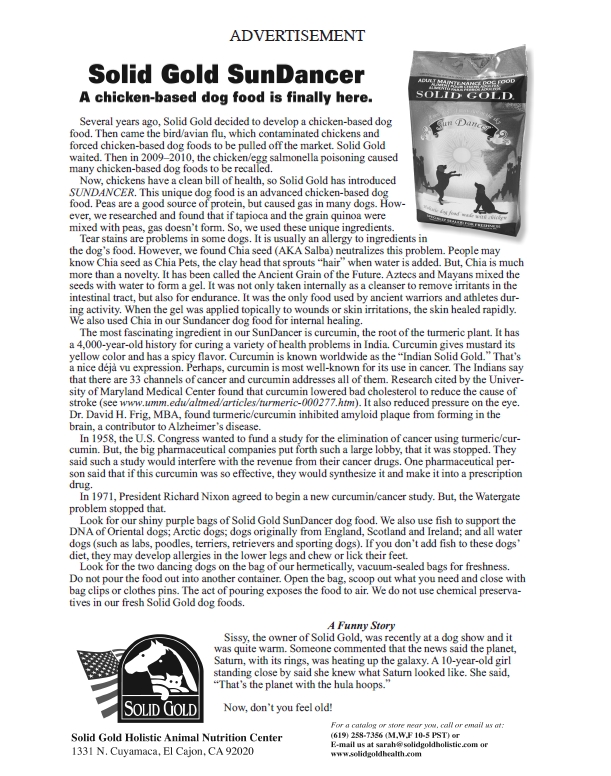
A little of this, a little of that. One mistake retailers could make is offering too much or too little product selection. First off, food and treats are must-haves for any pet care section. These are often gateway products for natural/organic shoppers to experiment in the pet care segment. “Food will continue to lead the way,” says Yaskulka. “Natural consumers figure out for themselves that ‘you are what you eat’ and they start reading and learning about ingredients. Then, they realize the same is true for pets.”
In helping these customers, be knowledgeable about which food ingredients comprise a good pet food, and which just sound good. For instance, Yaskulka believes chicken meal isn’t a good choice for pets because it could be rendered or waste product meats, depending on the manufacturer. Rather, pet owners may prefer “ingredients they’d feed to all family members, such as fresh meats, whole grains, and lots of fresh fruits and vegetables,” he says.
Smith feels that it’s important for retailers to have a selection of grain-free foods available for dogs and cats. And, shoppers are also looking for nutrient-rich, protein-focused pet foods “without the excess fat, calories or minerals the pet doesn’t need.”
|
Gut Function in Canines and its Overall Effects Pet ownership is on the rise! According to the 2011–2012 American Pet Products Association (APPA) National Pet Owners Survey, 62% of U.S. households have a pet in the house; this equates to nearly 80 million homes with at least one pet roamin The National Pet Industry provides pets with natural and “organic” foods, as well as both general and “species-specific” supplements for optimal health and longevity, with (at least for most) safety always a priority. While pet owners must be cognizant of their pets’ general health requirements, in addition to this, it is also their (the pet owners) responsibility to be “proactive” in seeking out the knowledge required to make educated decisions about their pet’s many options for overall health care. One of the most physically (and emotionally) taxing issues in dogs is skin and coat health. What the majority of pet owners do not realize is that many skin and coat problems that arise so frequently (i.e., itching, flaking, scaling, irritation, swelling, inflammation and auto-immune disease) may actually be harbingers of an underlying, yet frequently overlooked problem; gastrointestinal and overall “gut” dysfunction/disease! If gut issues are indeed the underlying problem to the many skin and coat compromises in our best friends, then they must be dealt with first and foremost. In addition, there are also several similarities between problems arising from the gut/GI-tract and those of the skin and coat. Case-in-point: Various skin eruptions, “surface wounds,” general irritations, inflammations, skin ulcerations, epithelial dysplasia and even “hot spots,” are quite similar in their biological etiology to cell-barrier/tissue damage of the GI-tract (2, 3). Skin and coat issues in canines are quite prevalent; some of the major ones commonly observed are allergic/contact dermatitis, eczema, hair loss, hot spots, mange (both Demodectic and Sarcoptic), benign/cancerous skin growths and Mast Cell tumors. The culprits responsible (whether directly or indirectly) for these maladies can be many, including liver/kidney disease, stress, anxiety, hypothyroidism, parasitic mites, cancer, autoimmune disease, etc., but the major underlying health compromise for many of these skin and coat diseases actually originates and even worsens due to gastrointestinal-health compromise (4, 6). The above statements need no explanation—those are the facts, period! A weakened/compromised immune system allows for the unimpeded entrance and colonization of pathogenic bacteria, fungi and yeast, as well as surface/air poisons, environmental toxins, xenoestrogens and many deleterious critters to penetrate the body. This allows for the infiltration of many other microbial opportunistic enemies to set up shop and cause systemic infection (7, 8). As 70–90% of the immune system in both humans as well as animals is contained in the GI tract, the gut lining and the Gut Associated Lymphoid Tissue (GALT), it is imperative that proper diet, nutrition and good bacteriological balance be maintained at all times. This will ensure immune modulation and immune system strengthening, which, in turn, will aid heavily in the defense against bacterial and yeast invasion, as well as protect against systemic infections that negatively affect both skin and coat health (9). Because of limited space, an expanded version of this article may be found in the free, online, May 2011 issue of Nutricula magazine (The Science of Longevity Journal), by going to www.nutricula-u.com. In this issue, GALT is covered in detail, as well as the recommended foods, nutrients and supplements that should be considered for the overall skin and coat health of your customers’ best friends. Dr. Bob Berger, M.S., MVSc, Ph.D., holds advanced degrees from the University of Tennessee, (Knoxville, TN), and from the University of North Carolina, (Chapel Hill, NC), and completed his Post Doctoral training at the University of Pennsylvania, (Philadelphia, Pa.). He is the Editor-In-Chief/President of Nutricula Publications and is Co-Founder of the Health Factory Farm, [see; www.nutricula-u.com]. He received special training through the University of Tennessee, Agriculture Extension Service/School of Veterinary Medicine in Canine Tick/Heartworm Prevention, and Post-Surgical Care/Nutritional Support for Canines at the New Bolton Center, (School of Veterinary Medicine, University of Pennsylvania), and at the University of Georgia, College of Veterinary Medicine, (Athens, GA). References |
Other brands, like Solid Gold Health Products for Pets (founded by Sissy Harrington-McGill), feel strongly about avoiding corn, which the founder and president feels is not a good source of nutrition and is likely a genetically modified grain. Harrington-McGill’s company also prefers not to use soy or wheat. Rather, her firm formulates its dry foods with grains like barley, brown rice and rice bran as well as fresh meats, fish, fruits and vegetables.
Also noting the importance of high-quality ingredients, Solid Gold Health Products for Pets says on its Web site that it updates its formulas as new nutritional research becomes available. “For instance, a few years ago, we added taurine to all our dry dog foods to help protect against dilated cardiomyopathy,” says the firm on its web site. Solid Gold says it pays attention to ingredients that promote a healthy balance in a pet’s body. “All systems within an organism are connected with one another in some way, and any imbalance may disrupt other body systems before physical signs are seen,” the company believes, noting that selecting good quality ingredients in pet foods and supplements “promotes a healthful whole body.”
In a nutshell, stock high-quality pet foods with nutritious, natural ingredients. Be prepared to explain their benefits to shoppers, and ask your product manufacturers for additional explanations if you need them. Also, look for human-grade ingredients, advises Guinevere Lynn, directory of business development for Sun Chlorella, Torrance, CA. This goes for both foods and supplements. “Our Pet Sun Chlorella is the exact quality as the human grade. We don’t use an inferior strain,” she states.
While experts feel you should offer healthy pet foods, don’t get wrapped up in selling just that. Says Susan Weiss, president of Ark Naturals Products for Pets, Naples, FL, “The food category has expanded a great deal. One of my concerns is that retailers have devoted so much space to the food category.” This could be a problem, she says, because most pet products consumers are very brand loyal, and typically will stick to just one type of food. Thus, retailers may not need to offer the full gamut of brands to be successful. Plus, if a smaller retailer is doing so, they could be “shortchanging themselves of other products in the pet area that will provide new sales,” Weiss points out.
For Mitchell, the “less is more” theory applies. This approach may be quite different than how you’ve stocked the rest of your store. “It really comes down to differentiation. But, pet is different,” he states. “In many other categories, you try to find products to offer consumers selection. In the pet section, it is better to find brands that are differentiated and then carry the products of that brand.”
McCarthy says that to properly represent a line, try to keep a minimum of three SKUs in stock, if space allows. If you don’t have a lot of shelf space for larger bags of pet food, consider letting shoppers preorder large bases or cases of wet canned food, suggests Yaskulka.
In addition to food/treats, Weiss recommends starting with the following categories:
• Joint health products.
• Natural flea and tick repellants (seasonal, depending on your location).
• Skin and coat items.
• Dental products.
• Probiotics.
Another suggestion of appropriate pet products are enzymes for digestion. According to Dave Barton, director of education for Enzymedica, “Many enzymes are able to perform the same function within a pet’s digestive tract as they do in humans.” Therefore, we can expect pets to benefit from digestive enzymes to “support proper digestion and absorption of nutrients from wet and dry food.” He adds, “Better digestion may lead to better health, more energy and a happier pet.”
Sodhi feels having Ayurvedic supplements available for pet owners is important, especially those with ashwagandha, boswellia, digestion aids and curcumin.
And, according to Lynn, greens may be an important addition to your pet section—but, retailers must be sure clients fully understand how this category fits into their dogs’ and cats’ lives. “I think a lot of pet owners are unaware of greens. Those that are aware they can give their pets greens are doing so because it’s a deodorizer. Giving them anything chlorella based will help to have fresher breath and to smell better,” she states. Her firm’s chlorella product for pets also helps detoxify and revitalize pets because of its nucleic acid content, “which helps to rebuild damaged DNA in the body,” Lynn says. Anecdotal stories point to benefits for older and sick animals.
You may also want to pay attention to overall market as well as your local trends. Such growing segments include the natural cat litter sector, says Mark B. Hughes, Swheat Scoop Natural Cat Litter, Detroit Lakes, MN. And, David Reese, general manager of Wally’s Natural Products, Auburn, CA, believes pet care products such as shampoos and homeopathic products will expand as “consumers demand high-quality natural products for their pets as they do for themselves.”
But, you also must identify what works in your community, possibly by surveying your clientele. Reese offers a great example: “The needs of a store in a rural area might be more flea and tick type prevention whereas a suburban store might be more allergy and itch-control products.”
Sell well. As alluded to earlier, selling pet products may require a little extra time with clients to be sure they understand the difference between mainstream and natural options. There’s also this to consider: pet owners are a special breed. And, you may have more success closing the deal if you understand what makes them tick.
For instance, Yaskulka believes that natural consumers are caring customers, in general. Many have a special place in their hearts for animals, and this sentiment may be magnified among pet owners. “Look for those consumers to get even more discriminating about supporting companies that support causes they believe in,” he states.
Several manufacturers of natural pet products are doing good work with animal-specific non-profit organizations. Why not tell your clientele about it (via shelf talkers or a targeted end cap) so they can help support good causes?
Yaskulka offers an example: “Last year, we donated over one million meals of Halo Spot’s Stew to celebrate the U.S. Postal Service Animal Rescue stamps. And, we’ve become the exclusive food sponsor of Freekibble.com, founded by ASPCA kid of the year Mimi Ausland.”
Likewise, eco-friendly, natural business models resonate well with pet care shoppers. Says McCarthy, “We have received positive response from customers and we continue to expand our eco-conscience values into the Zuke’s product line.” He explains that his company’s entire crunchy treat line are made in a production plant powered by 100% wind energy. The line has eco-friendly packaging and the company’s offices are powered by 100% green electricity.
Also speaking of the environmental effort of pet supply makers, Hughes adds that “natural litters meet the needs of pet parents looking for safe and natural alternatives to clay-based litters which are hard on the environment.”
Shoppers, Sit. Stay. One uphill battle a natural products store faces is getting shoppers to realize you have pet items available. This may even be true of your regular clients, who may zip through your store to their favorite sections without taking the time to peruse all your offerings. Says Mitchell, “Most consumers will shop your store for themselves and then go to a pet store to buy natural and organic products for their pets. Sadly, many of them do this because they simply do not know their store carries pet. So, place pet items where you want in your store, but make sure to find the right opportunity to let your consumers know that you carry pet supplies.”
Reese agrees, noting, “Everyone has a pet but no one goes to the mom and pop health food store looking for products for their pet.”
Increasing the visibility of your pet care section could be as simple as installing temporary end caps or using window signage from pet products manufacturers, McCarthy suggests.
Also make your pet products shelves look “loved.” Use shelf space to its ma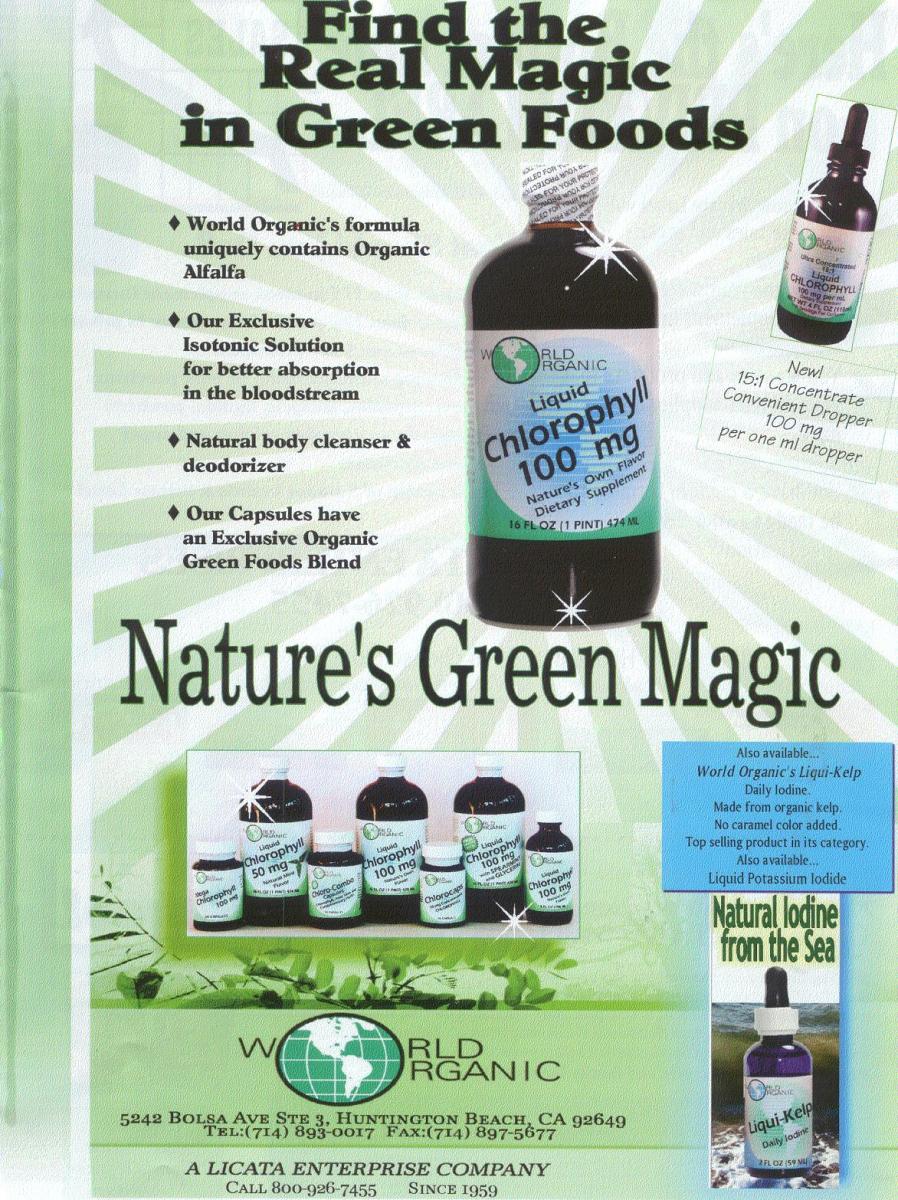 ximum capacity. “Products should be shelved as close together as possible, with plenty of back stock so that there is never an empty spot (which could result in a lost sale),” McCarthy recommends.
ximum capacity. “Products should be shelved as close together as possible, with plenty of back stock so that there is never an empty spot (which could result in a lost sale),” McCarthy recommends.
Adds Weiss, “Be committed to the category, make the shelf look great—position it in a prominent area, dust the products, straighten the shelves, make it look active—and make sure your employees talk it up. Typically, it’s been treated like a second- or third-class citizen.”
If you’re debating about whether to integrate pet products (like supplements) with the human variety or segregate them, Reese recommends a pet-dedicated grouping so as to eliminate confusion and ensure they don’t get lost. He states, “I would put it somewhere visible to create awareness, but also realize a customer may need to see the all-natural pet products several times before it sinks in that while natural health is very important for them its also important for their pets.”
Weiss also strongly advocates for a segregated type of layout. She offers an interesting example from Whole Foods Market: “The Whole Foods stores that have segregated pet food from pet health products and shelved the supplements in the human supplement area are struggling.”
The reason why is simple, says Weiss. “Consumers are not interested in traveling up and down the aisles to look for pet products. Additionally, it limits opportunities for consumers that are grazing and just considering a purchase.”
Last, consider positioning a few items at check-out for impulse buying. Choose item much like your human impulse regulars: treats (including bones and rawhides), dental items like breath fresheners, natural deodorizer sprays and maybe even canned wet pet food.
A manufacturer is a retailer’s best friend. If you’re looking for a little help promoting your pet care section, there’s no one better to ask than your product manufacturers.
For instance, Weiss notes that her company offers samples, product info, shelf talkers, passive samples, support for events (demos, dog washes, etc.), in-store training, web seminars and more. “Most corporate natural stores do not use them as they have clean shelf policies. It’s a perfect opportunity for smaller stores to show their difference,” she states.
Also be sure to talk to your manufacturers about pre-packed shippers and clip strips, which can certainly help your merchandising and promotional programs. McCarthy says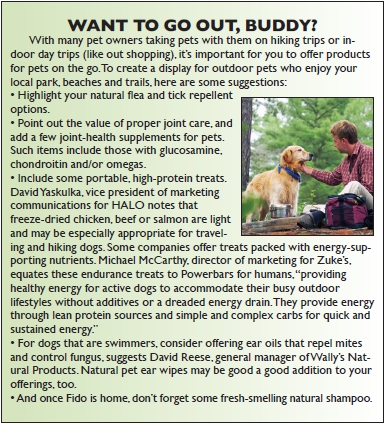 his company offers everything from high-quality wood counter and floor displays to clip strips, “We also offer affordable buy-ins with top sellers to help move the product for retailers while conveying our authentic branding,” he states.
his company offers everything from high-quality wood counter and floor displays to clip strips, “We also offer affordable buy-ins with top sellers to help move the product for retailers while conveying our authentic branding,” he states.
And, Mitchell notes that his firm has scheduled promotions throughout the year for retailers to follow that will help “drive impulse purchases, new consumers and value rewards for existing consumers.”
For web-savvy retailers, Smith says that WellPet has online training modules that cover topics like how to discuss natural pet foods with customers and also the benefits of various dog and cat recipes. “We put very high value on the benefits of education and go to great lengths to educate store associates and customers about our natural pet food,” he states.
Gobble Up the Supplements
We’ve talked about informing shoppers about natural pet food quality; there are also a few hallmarks of high-quality pet supplements. Like human supplements, Yaskulka says his company chose to manufacture its supplements (and other products) here in the United States. “Our facilities follow U.S. Department of Agriculture protocols for manufacturing, and are regulated by the U.S. Food and Drug Administration [FDA],” he states.
McCarthy points out that his company manufactures its products in the United States and sources most of its ingredients here, too.
Following strict production guidelines, like FDA’s good manufacturing practices (GMPs) is something that retailers can check with their manufacturers about—and relay such information to shoppers. Says Barton, “All Enzymedica formulas, whether designed for people or animals, are held to the same high GMP standards of manufacturing.”
Such high-quality manufacturing isn’t a given across all companies, unfortunately. Says McCarthy, “Pet supplements, and even ingredient sourcing and disclosure, are not held to the same standards as human supplements, although we are seeing big changes in this arena and more regulation.” He notes that his company used USDA-approved meats, fresh fruits and veggies in its supplement treats.
Retailers can also ask manufacturers whether they are members of the National Animal Supplements Council (NASC), which Weiss says is “really a higher standard than human supplements.” Members are entitled to place the NASC Seal on their labels as a “symbol of ‘quality assurance’ for consumers and other stakeholders,” the group states on its Web site. The NASC go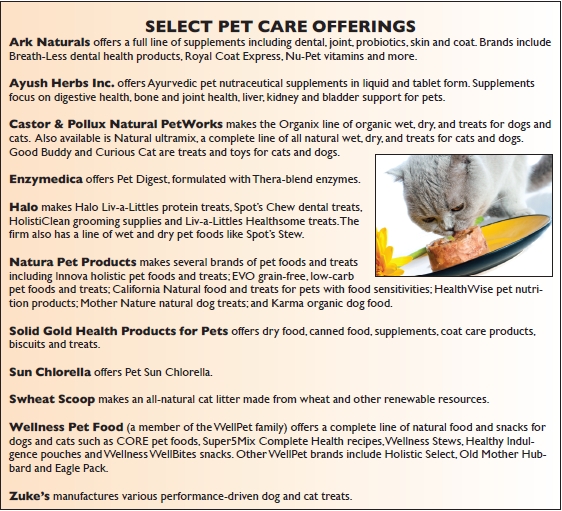 es on to state, “The Seal is a way for consumers to know that when they buy a product, they buy from a reputable company that has successfully completed a facility audit.”
es on to state, “The Seal is a way for consumers to know that when they buy a product, they buy from a reputable company that has successfully completed a facility audit.”
According to Weiss, members of NASC (like her company) must give the organization a list of the active and inactive ingredients in their products. In addition, “All NASC members are required to enter adverse events in a highly encrypted data base that views the entire category and all members so we can get a great visual if an ingredient or type of product is dangerous in the marketplace. To date that type of accountability is not part of the human supplement industry,” Weiss explains.
In addition members must have a quality control manual in place with standard operating procedures for the production processes. “This helps ensure the company is providing a consistent and quality product,” says NASC. Plus, certain label guidelines must be met.
To see a list of member companies, visit http://nasc.cc. WF
References
1. Packaged Facts, “Sales of Pet Supplements for Dogs and Not ‘Recession Resistant,” but Nevertheless Resilient,” press release distributed Jan. 11, 2011.
2. American Pet Products Association, “Pet Ownership Industry Statistics & Trends,” www.americanpetproducts.org/press_industrytrends.asp, accessed Jan. 31, 2011.
Published in WholeFoods Magazine, June 2011


 g around somewhere on the premises! Of this number, dogs account for 78.2 million of these pets (1). For the year 2011, the estimated expenditures for pets in the U.S. will be $50.84 billion (1).
g around somewhere on the premises! Of this number, dogs account for 78.2 million of these pets (1). For the year 2011, the estimated expenditures for pets in the U.S. will be $50.84 billion (1).







